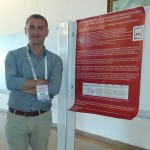
Chemistry and chemical engineering visiting staff
Take a look at our chemistry and chemical engineering visiting staff.
Visiting staff

Professor Richard Allington
Visiting Professor of Chemistry

Dr Chris Amodio
Senior Teaching Fellow of Chemistry

Professor Melanie Bailey
EPSRC and Professorial Research Fellow Director BBSRC SEISMIC facility

Dr Melis Duyar
Senior Lecturer in Chemical and Process Engineering

Dr Colin Hare
Visiting Senior Lecturer of Chemical Engineering

Dr Kajally Jobe
Visiting Lecturer of Industrial Chemistry

Dr Lian Liu
Reader

Professor William Lockley
Visiting Professor of Chemistry

Dr Husseen Manafikhi
Visiting Postdoctoral Researcher

Dr Eduard Mas Claret
Visiting Research Fellow of Chemistry

Dr Laura Pastor Perez
Senior Research Fellow of Chemical Engineering

Dr Tomas Ramirez Reina
Visiting Professor of Chemical and Process Engineering

Professor Jonathan Seville
Visiting Professor of Chemical Engineering